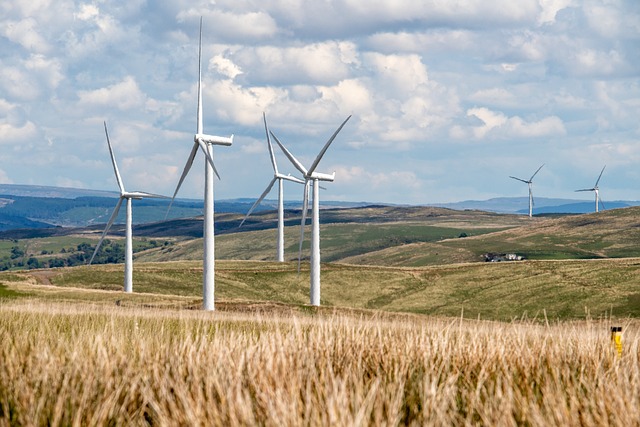Taking the wraps off RHI for homeowners: an air source heat pump.
-
The Renewable Heat Incentive (RHI) for domestic properties provides incentive payments to make technologies such as heat pumps, biomass, or solar thermal a more attractive proposition for space heating or hot water.
-
The scheme complements the non-domestic RHI, which serves commercial properties.
-
A taxpayer-funded scheme, so no burden on other bill-payers.
Who’s it for?
The RHI scheme is aimed primarily to promote retrofitting of renewable heating systems in households that currently rely on fossil fuels for heating, notably solid fuel or heating oil, and are off the gas grid. It is unlikely to attract people away from gas central heating as prices stand at present.
Eligible applicants include homeowners, private and social landlords, people building their own home, and third party owners of heating systems.
What technologies are eligible?
Four types of technology are eligible from the outset (see below). The heating system must be certified under the Microgeneration Certification Scheme (MCS) or equivalent scheme, and the technology must be an eligible product and new (not secondhand) when first commissioned. Further, any system installed since 15 July 2023 will be eligible provided it meets the criteria.
- Air-to-water heat pumps (ASHP) – must exceed a certain level of efficiency, with a seasonal performance factor (SPF) >2.5.
- Biomass boilers – including pellet stoves with back boilers; boilers will need to meet emissions standards.
- Ground source and water source heat pumps (GSHPs and WSHPs)
- Solar thermal hot water systems – both flat plate and evacuated glass tube types.
NOTE: Eligible biomass heating systems and heat pumps must be used primarily for space heating – although changes to the regulations in 2025 mean that some biomass stoves that can be used for cooking as well as space heating may now be eligible. Solar thermal systems must be for domestic hot water only, not for space heating or for heating your swimming pool! Also, biomass systems require an emission certificate indicating levels of emitted pollutants when burning specificed fuels.
What is NOT eligible?
Technologies that are currently excluded from the RHI include log/woodchip-fuelled stoves; condensing biomass boilers/stoves; air-to-air heat pumps; transpired solar thermal panels; biogas combusters; and micro CHP (combined heat and power).
Is my property/heating system eligible for RHI?
To receive the RHI, the heating system should heat only a single property that is classified as a ‘domestic dwelling’. This means it qualifies for an Energy Performance Certificate (EPC). Where a single heating system heats two or more separate dwellings, as in a block of flats, the non-domestic RHI scheme is applicable; this has different tariffs, and a longer tariff lifetime, and may be a more attractive proposition!
You must obtain proof that the property meets minimum requirements for cavity wall or loft insulation, in the form of an EPC no more than 24 months old.
You must apply for the RHI scheme within 12 months of the commissioning date of your system. For systems installed on or after 15 July 2009, the deadline for applications was 8 April 2023 (i.e. within 12 months of the launch of the scheme).
New builds and ‘custom builds’
The domestic RHI strictly applies only to retrofit of heating schemes, not to new builds. However, when the system was installed during the construction of a property that is deemed to be ‘custom’ built, i.e. constructed and financed principally by a single individual as a DIY project, then it could qualify for the RHI providing you can provide evidence in support of this (e.g. invoices for materials). Similar conditions apply to barn conversions and the like.
Sustainability requirements for biomass
From 5 October 2025, the fuels used in biomass systems registered under the RHI are required to meet sustainability targets. In effect, the lifecycle greenhouse gas emissions must be at least 60% lower compared to an average value for equivalent fossil fuels. Customers can find suppliers of woodfuel meeting these criteria on the Biomass Suppliers List ‘Find a Fuel’ website.
The sustainable fuel will have an authorisation number, which may be required during routine audit of the RHI. So, the advice is to use up any remaining old fuel stocks, and only buy authorised fuels from now on.
NOTE: CHANGES FOR 2017 and 2018: The government changed aspects of the RHI scheme for new entrants; these came into force in September 2017 (see Changes to Domestic RHI scheme in 2017 and 2018), with further changes applying from 22 May 2023 (see the Ofgem website). They include increasing certain tariff levels, changing requirements for electricity metering, capping payments according to a new heat demand limit, and the option of assigning rights to RHI payments to a third party. A factsheet outlining the scheme and current tariffs is published by Ofgem. For historical tariffs see table below.
Tariffs
Current tariff levels for each quarter according to when the application was submitted are shown in the table. These are claimed to compensate the homeowner for the extra cost of installing renewable heat technology, and the operating costs. From 1 January 2024 all new applications for the RHI may be subject to degression (i.e. reductions), the extent of which is reviewed every 3 months. Note that legacy applications are not subject to degression. Payments start 3 months after submission of a successful application. You can find out how much money you are likely to receive by using the government’s own Renewable Heat Incentive Calculator.
Technology Tariff (p/kWh) Date of application 2024 (9/4/ to 31/12) Q1-4: 2025 Q1-4: 2016 Q1-4: 2017 Q1-3: 2018 Biomass 12.2 10.98, 8.93, 7,14, 6.43 5.14, 5.20, 4.68, 4.68 4.21, 4.28, 3.85, 6.54* 6.54, 6.74, 6.74 Air source heat pumps 7.3 7.3, 7.42, 7.42, 7.42 7.42, 7.51, 7.51, 7.51 7.51, 7.63, 7.63, 10.18* 10.18, 10.49, 10.49 Ground source heat pumps 18.8 18.8, 19.1, 19.1, 19.1 19.1, 19.33, 19.33, 19.33 19.33, 19.64, 19.64, 19.86* 19.86, 20.46, 20.46 Solar thermal 19.2 19.2, 19.51, 19.51, 19.51 19.51, 19.74, 19.74, 19.74 19.74, 20.06, 20.06 20.06, 20.66, 20.66
N.B. Q1: 1 Jan to 31 Mar; Q2: 1 April to 30 June; Q3: 1 July to 30 Sept; Q4: 1 Oct to 31 Dec.
*NOTE: Increased tariffs for biomass, air source heat pumps and ground source heat pumps came into effect on 20 September 2023 under the revised scheme. All entrants to the scheme since 14 December 2023 will automatically receive the increased tariff levels.
Payments for new entrants will be capped to a heat demand limit depending on the technology. See Changes to Domestic RHI scheme in 2017 and 2018.
The tariff lifetime is just 7 years, which compares with 20 years for non-domestic RHI and renewable electricity feed-in tariffs. This 7-year timescale is supposed to match that commonly attached to consumer finance schemes or bank loans, which might be called on to help fund upfront capital costs of installing renewables. From June 2018 the householder is permitted to assign rights to RHI payments to a third party, such as an investor or installer. This option might help defray the initial installation cost.
Tariff payments are made quarterly and adjusted annually in line with the Retail Price Index. Payments for heat pumps and biomass are calculated according to the deemed heat demand of the property based on its Energy Performance Certificate (EPC), whereas for solar thermal they depend on the estimated output of the system based on its MCS performance data.
Heat demand limits
Under the revised scheme RHI payments are capped to a particular level of annual renewable heat demand, depending on the technology installed in the property:
- Biomass: 25,000 kWh
- Air source heat pumps: 20,000 kWh
- Ground source heat pumps: 30,000 kWh
So, properties whose heat demand is greater than these values will not receive RHI payments for heat output over these limits. The heat demand is calculated according to the Energy Performance Certificate for the property. Solar thermal systems do not have a heat demand limit; the output of these is calculated based on the Microgeneration Certification Scheme (MCS) certificate for the particular system.
Metering and monitoring of heat pumps
New entrants to the scheme are required to have some form of metering to monitor electrical input to their heat pumps, so that users can readily see how efficiently (or not) their system performs. Input can be measured simply by a meter built into the heat pump (an ‘on-board’ meter) or one connected in the external circuit feeding the heat pump.
However, the ‘premium’ option is a metering and monitoring service package (MMSP). This requires an MCS accredited installer to fit a set of meters and sensors that record the data and transmit it to a dedicated online viewing platform, and attracts financial support. Entrants who registered for a MMSP before 22 May 2023 will receive £230 per year for heat pumps, and £200 per year for a biomass boiler. Those registered on or after 22 May receive a single lump sum of £805 + £115/year for heat pumps, or for biomass boilers a lump sum of £700 + £100/year.
Degression
A complex set of rules determine if and when future tariff rates are reduced for newcomers to the RHI scheme. Any tariff cuts will be announced by BEIS three months in advance, based on whether or not certain thresholds for technology deployment and/or expenditure on RHI payments have been exceeded.
More information
A factsheet summarizing the change to the Domestic RHI scheme, and giving worked examples of how tariff payments are calculated, is available from the Ofgem website, which also has full details of both domestic and non-domestic RHI.



